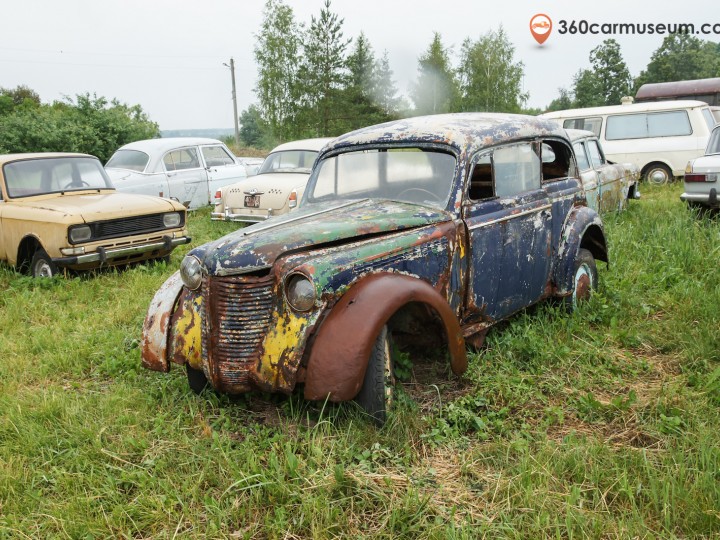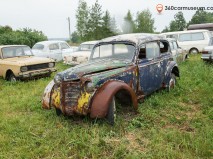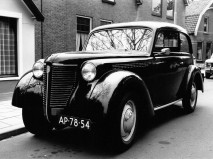1947 Opel Olympia 2-door
The 1935 Olympia was Germany's first mass-produced car with an all-steel unitized body (monocoque). This revolutionary technology reduced the weight of the car by 180 kilograms (400 lb.) compared to its predecessor. Production of the unibody design required new production methods and materials. Spot welding, advanced types of steel, and a new production line layout were among the many advances introduced by the Olympia.
The car was first presented in February at the 1935 Berlin Motor Show: production got under way later during that year. The Olympia was named in anticipation of the 1936 Berlin Olympic Games. Before World War II it was made in two versions. From 1935 to 1937 the Olympia had a 1.3 litre engine. For the OL38 version made from 1937 to 1940 this was replaced by a 1.5 litre overhead valve unit.
It offered with 1.3 litre, 4 cylinder, side valve, 24 hp (18 kW) engine capable of 95 km/h (60 mph). Drive was to the rear wheels through a three speed gearbox but a four speed unit became available in 1937. The car had independent front suspension with a live axle at the rear and semi-elliptic leaf springs. The car was made available in two versions, as a two door saloon and as a two-door soft-top convertible. Between 1935 and the 1940 over 168,000 units were built.








